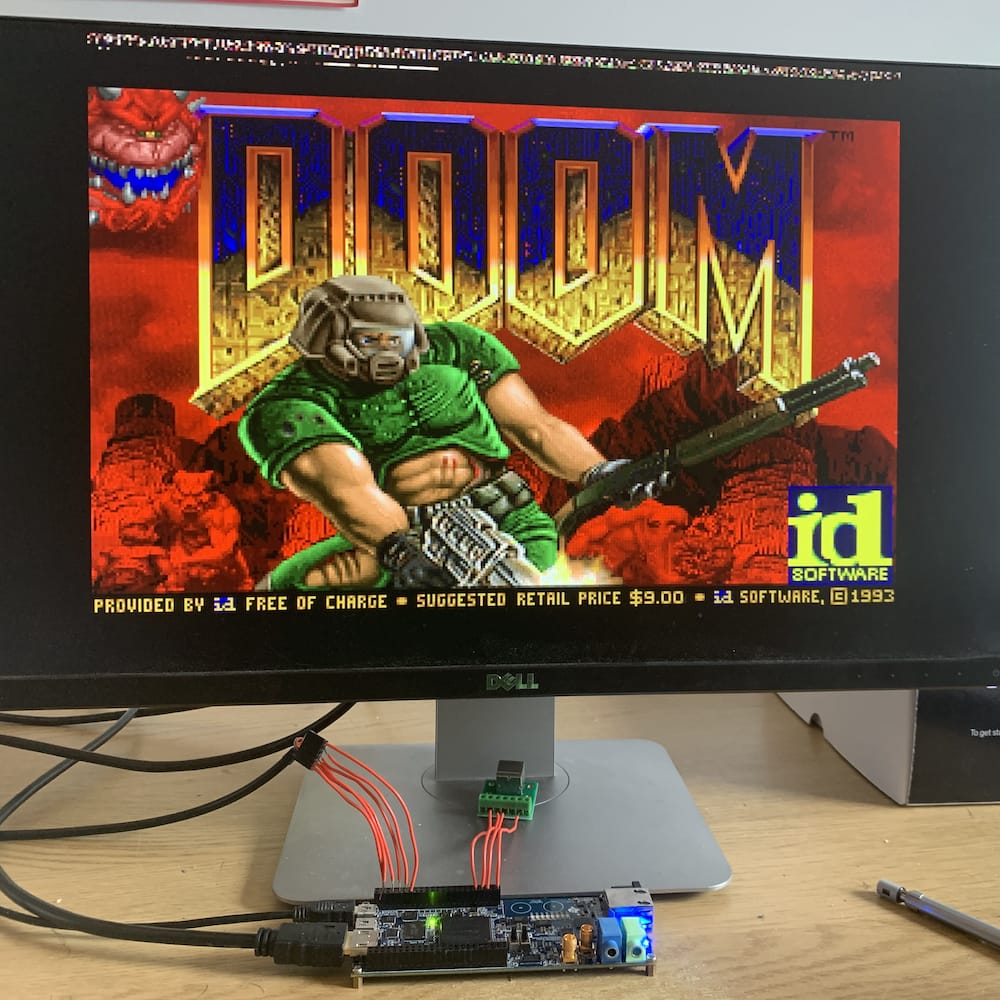Minaret
Minaret is an experimental softcore CPU and lightweight system-on-chip based on the MINA instruction set architecture, designed for use on FPGAs. It includes a DDR3 controller and direct-mapped cache, as well as a display controller, keyboard controller, timer, and UART interface. A fully LLVM/newlib based toolchain and instruction-level simulator allow others to write and test their own software for the platform in C. Getting DOOM running on Minaret was a long process (about 3 months porting LLVM and 3 months implementing hardware) but through it I learned a lot about the low-level foundations of computing - including not only compiler internals and CPU architecture, but also often overlooked pieces like linker defaults, compiler runtimes, and DRAM standards. Overall, it was a fun and rewarding exercise in building a computing system from scratch, and gave me a stronger understanding of LLVM, newlib, Verilog, and FPGAs.
Github Repo

















